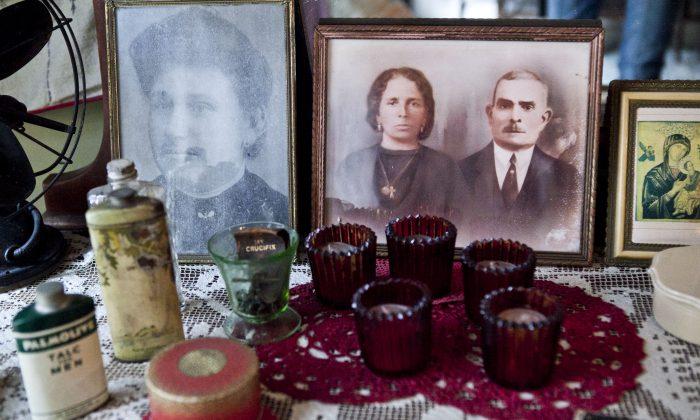NEW YORK—You could walk right past 97 Orchard St., on New York City’s Lower East Side without knowing how much history has passed through its doors. But the organization that now owns the five-story brick structure, the Tenement Museum, is working hard to make sure that doesn’t happen.
The museum leads waves of daily themed tours throughout the building’s several restored apartments that were home to over 7,000 people from 20 countries between 1863 and 1935.
The dark hallways and the building’s original 150-year-old wooden staircase and banister seem to whisper stories from the past. As you walk up the creaking staircase you can easily imagine women carrying water from the building’s rear yard spigot to their upper-level apartments.
Once inside the carefully restored homes, the museum’s tour guides use props, historically researched personal accounts and records, and photographs of former tenants to bring 97 Orchard of times past back to life.
“Our mission is we’re storytellers,” said guide Niki Cooper during a recent tour. Cooper described how the building was home to waves of immigrants who made the Lower East Side their starting point after immigrating to the United States.
“The Lower East Side in general [was] meant to be a first step,” said Cooper of many immigrant family progressions that went straight from a boat, to live in the neighborhood, to eventually another part of town.
One of the museum’s themed tours, Hard Times, gives a glimpse into the home life of a 1870 Prussian family called Gumpertz. Living at that time in what was known as “klein Deutschland” (little Germany), the Gumpertz family’s daily reality included sharing a rear yard outhouse, one water spigot for the whole building, and incredibly cramped quarters for a family of six—about 325 square feet.
“You have to sort of barter with your neighbors,” said Cooper of how people dealt with navigating for the water supply. She also pointed out that even inside the tiny home, family members had to work around one another in the cramped space.
Through his work as a heel-cutter, Mr. Gumpertz earned $7 a week to pay $10 for rent and other expenses, until an 1873 national financial crisis put him out of work. He disappeared, leaving Mrs. Gumpertz to fend for herself and their four children, which ultimately led to her taking out a $50 loan from friends to start her own seamstress business. She turned out to be successful, and in 1886 moved from the cramped apartment to Yorkville at 86th Street.
“She reached the pinnacle of the American dream with help from her village,” said Cooper.
But waves of other immigrants and their families continued to live and work in the area. By the turn of the century, the Lower East Side at Orchard Street and Delancey Street was the most densely populated neighborhood on the planet.
Among them were later occupants of the building in the next-door apartment in 1928, the Baldizzi family. The Sicilian immigrants came at a time when immigration reforms caused clamping down on quotas, and Mrs. Baldizzi entered the country illegally.
There were also some social concerns with certain types of diseases that immigrant groups such as Italians or Irish could have carried. The irony was that the conditions in which immigrants could afford to live were simply not up to par.
“Instead of blaming the conditions in which these people are living in small, cramped, airless homes—they blame the ethnicity,” said Cooper of the mindset at the time.
As a tenement, the legal term for a building that was home to three or more families, the building at 97 Orchard St., was shuttered in 1935 when a new fire code required staircases be fireproof. Like other tenements in the city, rather than spend the money to rebuild up to new codes, many landlords simply decided to shutter buildings. In the process, tenants were evicted while only commercial storefronts on the ground floor were kept open.
“It actually hurt this community because many people lost their homes,” said Cooper. But the loss of one generation became the gain of another.
Rediscovered in the 1990s, the building is now part of the larger museum, which includes a nearby bookstore with floor to ceiling books about New York City, and a small screening room with a 30-minute film about the area’s history. The museum also hosts walks through the neighborhood, historical re-enactments, and evening lectures and readings.
Only an hour long, a tour through 97 Orchard St., is a valuable glimpse into New York City’s past.




